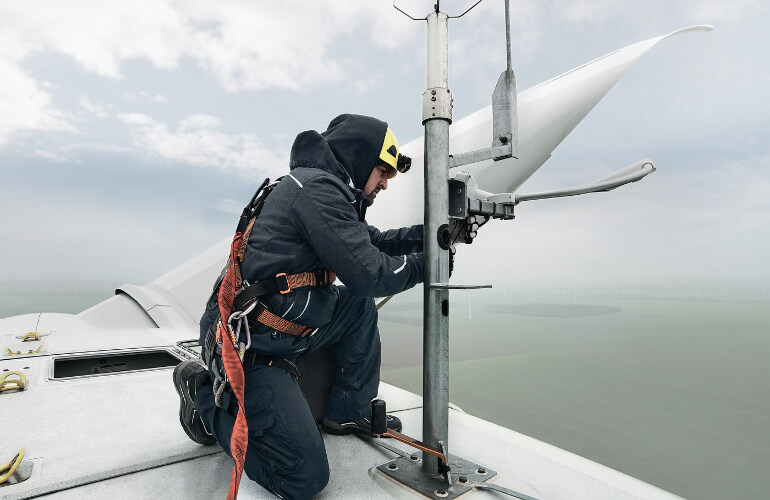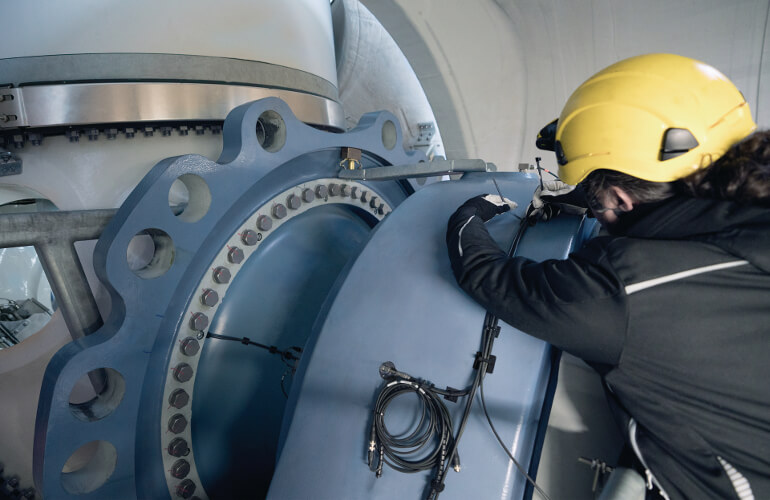- International
- Argentina
- Australia
- Austria
- Belgium
- Brazil
- Canada
- China
- Czaech Republic
- Denmark
- Finland
- France
- Germany
- Hong Kong
- Hungary
- India
- Ireland
- Italy
- Japan
- Mexico
- Netherlands
- Norway
- Philippines
- Poland
- Portugal
- Republic of Korea
- Romania
- Russian Federation
- Singapore
- Slovenia
- South Africa
- Spain
- Sweden
- Thailand
- Turkey
- UAE
- United Kingdom
- United States
How cable requirements are evolving on wind projects
An interview with Nick Korth, product marketing manager of energies, HellermannTyton
MILWAUKEE - We talked with Nick Korth, product marketing manager of energies, to get some insight into how cable management is evolving on wind projects.
What kind of cable management is necessary on onshore and offshore wind projects?
There are many different applications when it comes to standard wind turbines. Each application uses specific cables, leading to a wide variety of wire management needs. High voltage, control and data cabling all have different routing requirements. For example, the nacelle contains moving and rotating parts with the pitch control and yaw system. These cables are often high voltage and large, so ensuring they are secure is important because repairs can be expensive and time consuming. The gearbox and drivetrain can be another demanding area for cable management solutions. It is critical to specify the right product mix — such as large, 250-lb cable ties with heavy duty mounts — as well as work with a company that has intimate market knowledge and material expertise.
In the tower, the cables remain mostly stationary. Some cables, such as tower lighting cables and weather monitoring systems at the top of the nacelle area, are exposed to a wide variety of harsh elements.


What environmental conditions have to be considered for wire management on wind projects that maybe aren’t as much of a concern on ground-level applications?
At the top of the turbine, wire management can experience high wind loads and challenging weather conditions such as ice accumulation. Careful attention should be given to the same conditions at ground level. Heat, UV and cold are all severe environmental factors that can degrade wire management components. For example, cold and dry climates can make plastic components brittle. By choosing the right material and manufacturer, a specifying engineer can choose a material that is enhanced with modifiers that provides a longer performance life.
Offshore installations can experience more moisture, leading to a variety of issues. Moisture and salt can degrade materials like metal. Choosing high quality metal products, or plastic for that matter, to avoid issues with dissimilar metals or premature degradation is important. Other considerations include lubricants, chemicals and oils. With long-term exposure, these liquids can severely impact metal and plastic, so knowing the material and performance characteristics of these wire management components is critical.
What future wind turbine advances is HellermannTyton keeping an eye on?
As with all the industries we supply products to, increasing efficiency for installers as well as the O&M market is critical. We want to make sure all of our products are easy to use while providing the same high-quality performance that HellermannTyton is known for. There has been increased demand for turbine monitoring in several areas, such as the blades, bearing and generator production and tower movement. With further reductions in weight, active load controls are demanding more monitoring points on the turbine to increase safety and stability during operation. The cabling of the monitoring points is one of our focus areas.
Another point of emphasis is fewer mounting attachments, such as holes or bolts to manage cables. Traditional routing methods are now giving way to magnetic and adhesive solutions for this market.
Reprinted with permission from Windpower Engineering & Development
About HellermannTyton
HellermannTyton is a global leader in cable management and protection products, identification systems and network connectivity solutions. Its systems and solutions are specified by major manufacturers and contractors in the OEM, data communications, automotive, heavy equipment, renewable energy and related industries. The company's engineered solutions and innovative products are designed and constructed to meet the strictest quality standards while delivering reliable implementation at the lowest cost. HellermannTyton operates in 39 countries, with North American headquarters in Milwaukee, Wisconsin. (https://www.hellermann.tyton.us/)
